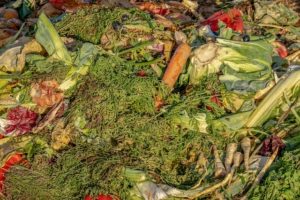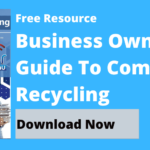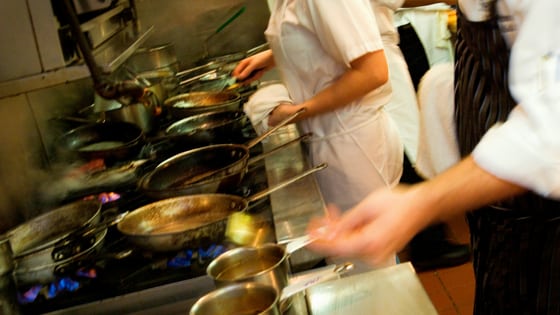Types Of Composting In Solid Waste Management – 🌱 And More To Know!
Energy Disrupter
Types Of Composting In Solid Waste Management: In our past blogs, Mr Waster always discusses with you the importance of composting.
For today’s blog, we will further elaborate composting, focusing on its types and their differences.
>Download Now: Free PDF Business Owners Guide To Commingled Recycling Bin Services
All about Waster
Before we continue with the main topic on types of composting in solid waste management, let me first discuss with you Waster.
We here at Waster provide you with innovative solutions for you and your business’s waste management and recycling needs. Additionally, we provide flexible, 30-day contracts instead of the typical lock-in contracts, which proves to be better.
Click on the blue button to learn more.
READ: Can Plastic Affect Fertility?
Types of composting in solid waste management: what is it used for?
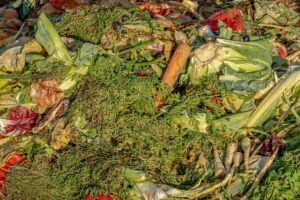

Composting, in layman’s term, means breaking down organic material. We use composting for the following reasons:
- For the environment – as human beings sharing the same Earth, we should be more responsible in managing our waste. But how can we do that? Well, one thing you could do is by composting! Composting helps divert waste from landfill.
- For your garden – composting also benefits your garden tremendously! It enriches your backyard with nutrients. According to recyclenow, it “improves soil structure, maintains moisture levels, and keeps your soil’s pH balance in check while helping to suppress plant disease.”
Three types of composting in solid waste management
Currently, there exist three types of composting in solid waste management.
Aerobic composting
The first type of composting in solid waste management I will discuss today is aerobic composting.
Aerobic composting means using microorganisms requiring oxygen to decompose organic matter. Generally, air breaks down materials in a quicker way. These microorganisms I mentioned live in the moisture surrounding the organic matter. Additionally, the aerobic microorganisms produce carbon dioxide, ammonia, water, heat and humus.
The most common type of aerobic composting is the Heap method. First, the organic matter needs to be divided into three different types and to be placed in a heap. Furthermore, composters cover them with a thin layer of soil or dried leaves. Composters need to turn it once every few days to allow proper air circulation in the process. The heap also needs to be varied every week for conversion to happen. Mixing needs to be done every 15 days, and there is no fixed time in order to know if the compost is ready.
Anaerobic composting
Contrary to aerobic composting, anaerobic composting is a type of composting in solid waste management that does need oxygen in the process.
It also takes longer to decompose organic matter if anaerobic composting is used, as compared to aerobic composting. It usually takes months – or even years – for the process to happen and typically occurs in a landfill. This process also does not need supervision unlike aerobic composting wherein you need to turn it in order for the air circulation to flow properly.
This type of composting produces methane, a potent greenhouse gas. Obviously, this means that anaerobic composting, if done in the wrong way, poses a huge threat to the environment.
One type of anaerobic composting farmers have been using for centuries is the Bokashi composting. Unlike modern composting wherein composters now use heat and soil microbes to break down materials, Bokashi composting uses beneficial microbes. It typically takes 4-6 weeks before the Bokashi composting process is completed. It also allows all types of food scraps to be composted, and not just the plant-based food waste.
Vermicomposting
One more type of composting in solid waste management, called vermicomposting, uses earthworms to enhance the composting conversion process and produces a better by-product.
By-products of vermicomposting, called vermicompost, consists of processed straw, husk, leaves, stalks, and weeds. Additionally, other ingredients used to create vermicompost include livestock wastes, poultry litter, dairy wastes, food processing wastes, organic fraction of MSW, bagasse, and digestate from biogas plants.
The earthworms eat up 40-60 per cent of the volume of organic waste. Here, I will share with you some benefits of vermicomposting and using vermicompost:
- Improves plant growth
- Puts an end to diseases in plants
- Increases porosity and microbial activity in the soil
- Improves water retention and aeration
Waster’s solid waste management services offered in composting
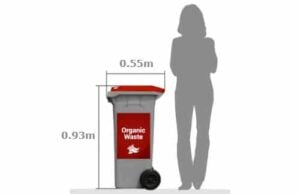

Here at Waster, we offer businesses who want to boost their recycling performance our organic waste bin. By using our bin, we ensure the following:
- You pay exactly what you asked for – and not a dollar more! For your waste management and recycling needs for organic waste composting – or any other type of materials – avail our flexible, 30-day contracts instead of those long, unproductive, and hidden fee-containing lock-in contracts.
- Designed for small and medium businesses – we help you reduce cost while boosting recycling. That’s a win-win situation!
- On-time and reliable – we provide fully-accredited logistics and facility operators. By saying so, we ensure the safety and efficiency of our services.
Other benefits in Waster’s organic waste bin collection
Other benefits, as included from our past blog on organic waste, includes the following:
- “Potential cost savings – significant amounts of food or organic waste in general waste bins can significantly increase the weight of the bins and hence the cost of collection. If the food-waste can be separated from the General Waste you could receive considerable discounts on your General Waste bins. As the weight and the volume in General Waste will be reduced, you may be able to reduce a service per week etc. You should also remember that if the food waste is removed, the bin will not smell as much and hence may not need to be collected as regularly. Check out our blog on wheelie bin cleaning for more info in this regard.
- Improved recycling – organic waste can be diverted to an organic waste management facility where the waste can be diverted from landfill and even turned into electricity for the grid or used to produce useful by-products such as compost. There are major investments occurring in Australia in recent years in such facilities – often called resource recovery facilities.
- Health and safety improvements – heavy bins are the primary cause of push and pull injuries such as strains. By removing organic and food waste from General Waste bins – the average weight of your larger bins will decrease (food waste is picked up in smaller bins such as 120-litre bins). This is one of the easiest ways to reduce injuries, particularly if you have to move large bins around your sites.”
Types of composting in solid waste management: conclusion
Different types of composting are available depending on what is needed. Consider these three (aerobic, anaerobic, and vermicomposting) types of composting next time you have organic waste in your hands.
If you’re looking for some other bins, check our waste recycling shop and find the best deals in terms of pricing and services. Also, please call 1300 WASTER (1300 927 837), or email us at [email protected] if you have any further questions.
Should you use your rubbish as a fertiliser to produce a type of waste in solid waste management?
There are many types of composting in solid waste management – from green leaves, trees and clean green waste to organic food waste with zero contamination. We have, of course, covered these types of composting in blogs such as how to recycle organic food waste.
From our perspective, using general waste, even treated waste for composting, is a completely different ball game. At the end of the day, if general waste is being used on land or to grow food, we want to be completely confident it is safe!

A scheme of this nature was stopped in NSW following an EPA investigation in Oct 2018.
The ABC reported that:
“A report prepared for the Environmental Protection Authority (EPA) found the material “had highly visible plastic and glass components” and provided limited agricultural benefit.
“But now farmers have slammed the NSW Government’s handling of the issue, saying that the risks have been overblown and threatened the industry’s “clean and green” reputation.”
There was a clear demand from farmers for this waste management compost made from treated red bin collections (composting methods of solid waste), mostly from a financial perspective. It was cheaper than commercial fertilisers. To understand better, see a blog on whether we should be burning plastic waste for energy.
Many farmers reported the lingering presence of waste in the waste management compost:
“One amusing part was finding a plastic pen from Disneyland where you could still read the phone number on it, it was so clear.
“We couldn’t see that there was going to be too many problems with using it, but we do a fair bit of export of live animals … and we thought with some of the testings we may be taking a risk if there was anything in it.”
The waste industry wants to see the reintroduction of this system
Many in the Aussie waste industry want to see a reintroduction of this process. In early 2019, reports state that the NSW Government reconsidered this ban on waste used as compost.
Conclusion
We can muster up different ways to use different types of composting in solid waste management. Do not think of the process of making food waste from compost as rocket science.
In this day and age where we become more aware of the damage caused by plastics (e.g., microplastics entering the environment and oceans), dumping this stuff on fields sounds does seem insane.
We have no idea about the number of microplastics in this compost and the impact it will have on the environment. If the waste management compost contains large amounts of visible plastic and glass, I can only imagine it contains even more microplastics.
Proven as a fact, animals have eaten plastic (through choice) due to colour and smell. Taking short cuts and saving dollars is not a good enough reason to spread the waste on fields and endanger our food industries, food exports and the health of livestock and humans. See a blog here on using waste food as a stockfeed.
Also, see our blog on compostable plastic cups, etc. here.
Types of composting in solid waste management: compostable food containers
Further discussing the types of composting in solid waste management, we now take a look compostable food containers.
Due to the rampant amount of waste produced by food and packaging that goes to landfills, incineration or just straight-up tossed everywhere, the Australian government has made efforts to reduce pollution and implement more effective waste management.
It is a good thing that alternatives to plastics have been created to fight off the pollution that has been ruining the Earth. The question here is “Are these alternatives enough to save the Earth? ”
The alternative solutions that were produced are compostable and biodegradable materials designed to break down in ways that plastic materials will not.
They are already used by businesses – especially the food industry – to promote the idea of “going green.”
Having a compostable or biodegradable container does not mean that it all ends there. To ensure the zero-waste idea, proper waste management options (i.e., collections and disposal facilities) are needed to properly dispose of both food and container. They contain a lot of nutrients that help the plants and soil.
Compostable food containers: definition
Contrary to popular belief, compostable food storage containers differ from biodegradable ones. Below, we discuss their differences.
Compostable means that a product or material can break down within the right environment and conditions as fast as 90 days without releasing toxic materials. However, we have no actual facilities available to handle this, as we saw in our blog on coffee cups. As for biodegradable materials, they break down in landfills. They leave behind residue that harms the soil, unlike compostable materials which usually leaves behind hummus.
Under the right conditions, compostable materials are much better than biodegradable materials. They take much lesser time to decompose under the right conditions and release residue which is beneficial for the soil and plants around them. Many prefer composting of this type in solid waste management rather than biodegrading.
Benefits
As mentioned earlier, many businesses already made conscious efforts to help save the environment. In addition, they have used this as a viable marketing strategy effectively.
How can something like using compostable food storage containers help a business implement an effective marketing strategy, one might ask? See our blog on how beauty parlours can recycle their used containers.
First of all, numerous people have now become more aware of the environment. They demand that companies use eco-friendly products in their businesses in a bid to become more conscious and responsible. Customers tend to favour environmentally conscious companies. Correspondingly, they resort to boycotting irresponsible businesses that still use products and materials that cause harm to the environment.
The younger generation, especially, think like and do that. They make up the greater per cent of people who voice out their ideology to go green.
It also improves a brand’s image. It provides an edge over fellow competitors who still resort to unsustainable means.
Taking these things into consideration, using compostable food containers provides a number of benefits to businesses. Everybody (customers and businesses alike) wins!
The proper way of composting
Compostable food containers in Australia are taken to specialist facilities to properly process them and ensure their composting. If they have plastics or non-organic materials with them, specialist facilities reject them.
You can put these items in your compost bins:
- Compostable materials
- Fruits and Vegetables
- Bread (Anything made from flour, basically)
- Grains and Pasta
- Crushed shells of eggs
- Paper and Card
As for the following, you cannot put them in your compost bins:
- Plastic
- Glass
- Metal
- Meat
- Fish
- Dairy Products
- Fatty Products
- Grease
- Oil
You might be asking “How come meat and fish are not allowed to be sorted out in your compost bin? ” There are some reasons for that.
First, they interrupt the breaking down of other compostable materials. It ultimately slows down the decomposition process, as a result. Second, they attract scavengers like maggots, flies, and rodents that can compromise the cleanliness of your compost bins. Lastly, you would not want rotting meat and fish waste at your compost bins, right?
Composting food waste and container together?
The reduction of plastic – a detriment to the environment’s health – certainly helps. They can not be processed the same way as compostable food storage containers because they are toxic to the environment when decomposing. They either end up in landfills or incinerated.
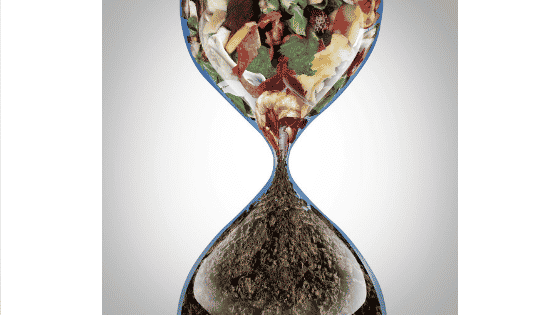

According to an article, to implement the zero-waste idea, food containers will be composted alongside the food waste in the near future.
The idea is that your food, along with its container, can be composted together to better help the environment, assuming it is biodegradable.
Is such a thing possible? Of course, it is! Here, we state why:
- Reduces the materials sent to landfills – it is only natural that when food and its container are composted together, it lessens the chance that the container gets sent to landfills.
- To prevent damage to the environment – when compostable food container and the food it contains are broken down together, it poses no threat to the environment. Food and plastic containers can’t decompose together, as they will most likely contaminate the soil with harmful residue.
- If the container is also biodegradable, that can be an effective alternative to plastic. You do not need to separate it for recycling. We can dispose of the entire container, along with the food, in the same bin.
These reasons promote the idea of responsible waste management. Furthermore, it provides an efficient way to decompose waste without compromising the soil, as well as cutting costs for waste management services.
Hassles of separating the materials often hinder recycling. With this innovation, we remove the need to separate them. This type of composting in solid waste management certainly provides us with better outcomes.
To conclude
In conclusion, Australia and its people have constantly made a conscious effort to save the environment. Building new facilities and investing in new packaging would be a great place to spend levies raised.
Compostable food containers serve a huge purpose in saving the world. As opposed to the traditional plastic counterpart, they can ease recycling and make separating of food and container a thing of the past. It is also much more beneficial for businesses to implement an eco-friendly approach than not to. It has a positive effect on your company socially, financially, and most importantly, environmentally.
Much is needed to be known how to properly dispose of compostable waste. Though a little bit complicated, it provides a positive effect for businesses, consumers and the environment itself.
A sure-fire way of successfully implementing the zero-waste movement is to let food and its compostable food container compost together.
Types of composting in solid waste management: composition of plastic?
At this stage, we hope to understand the nightmare caused by waste plastic and the fact it lives pretty much forever. We have argued in previous blogs that the damage it causes to wildlife (see Great Pacific Garbage Patch) and the lack of any real or sustainable “recycling” option for the majority of global plastic waste means that reducing or banning its use is vital.
In this environment, the concept of compostable plastic alternatives almost sounds too good – offering all the benefits of plastic (and there are lots) and none of the negatives.
There are lots of questions in regards to classification and the difference between biodegradable vs compostable plastic bags and containers (an accurate compostable plastic definition), for example. Are the items what they are cracked up to be?
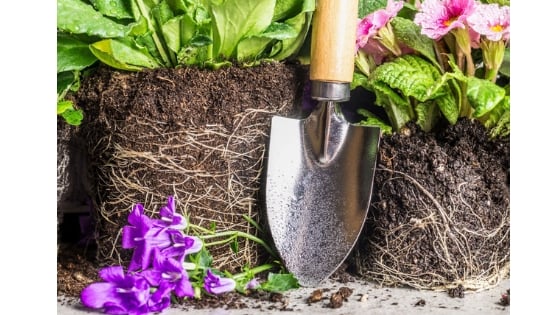
The dream scenario is that the compostable plastic film or even compostable plastic bottles would just break down into organic elements and nourish the soil like any food waste.
Of course, this vision is appealing. We just want to see how true it is in 2021.
The current view on composting plastic
No, we will find it difficult (almost impossible, even) to pull off this type of composting in solid waste management. Only certain plastic alternatives can be composted – and the details vary by product and region. We can refer to these products as bio-plastics.
There have been lots of confusion and mixed signals in regards to what really is compostable and if there are actually facilities available. For example, the ABC covered how Darwin council was banning the usage of single-use plastics on council land and encouraging compostable coffee cups. But, it was then pointed out that there are actually no commercial composting facilities in the entire Northern Territory!
This means everything ends up in a landfill anyway! We can answer the question [Can plastic be composted?] as a yes… but without any facilities. See our blog on bubble wrap.
We, thus, end up with the worst outcome. Businesses pay more for compostable coffee cups, only for them to end up in a landfill, instead.
The major problem: lack of facilities intended for composting
Whilst the products often can be composted, the big issue is that there are no facilities available.
In 2017, The Sydney Morning Herald reported that most Biopak containers still end up in landfill:
“BioPak is one of several packaging companies to launch in Australia in the past 20 years, catering to environment-conscious consumers. They sell about 20 million bioplastic coffee cups and sugarcane-pulp fast-food trays a month.
“But while bioplastic can be recycled, no recycling facilities in Australia have the technology to do so. Unless the products make it to a composting facility, they are destined for landfill. And there are only nine commercial composting facilities that accept BioPak in Australia – none of them in Victoria.
“The company’s coffee cups, which are made of paper coated with bioplastic, can technically be recycled. But many commercial facilities refuse to do so because of fears they will contaminate the recycling stream – fears BioPak says are unfounded. Technology can be installed allowing plants to separate the plastic and paper, but it is expensive and few plants in Australia have it.
“Only seven councils in Victoria will recycle BioPak’s cups, none of them in inner Melbourne.”
Commercial composting required? How does compostable plastic work?
It would be great if these items (all compostable plastic food containers) could break down in your garden compost. But, that is not the case.
“BioPak’s compostable products require high temperatures – 55 degrees plus – over weeks to break down, achievable only in specialised composting centres.”
The major facility in Sydney metro was the SUEZ Kemps Creek facility.
Collecting bioplastics is also difficult
As only a few facilities actually accept bioplastics, you need to arrange services with specific companies who run trucks to those facilities. And, they may not cover the entire city.
Final thoughts
In simple terms, some bioplastic can be composted in specific composting facilities throughout Australia.
In many ways, we are putting the cart before the horse Bioplastic can not be recycled or composted in the vast majority of areas in Australia.
We need to focus lots of effort and money on building facilities capable of this composting before we really roll out the cups, etc.
But as always, the big question is: who is going to pay for it?
It should also be noted that composting facilities smell pretty bad – i.e. due to decaying matter. It is not exactly easy to build these facilities in easily accessible locations. Would you want one next to your house? For example – the SUEZ Kemps Creek facility was fined by the EPA for the odours being emitted!
So truly, compostable plastic bottles and compostable plastic cups may still be a bit away. Check out our blog on whether drones can clean the ocean.
Also, check out our blog here arguing that we should not use compost made from red bin waste collections.




